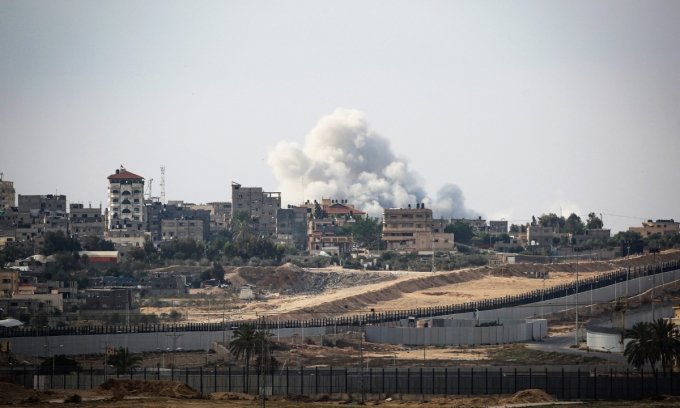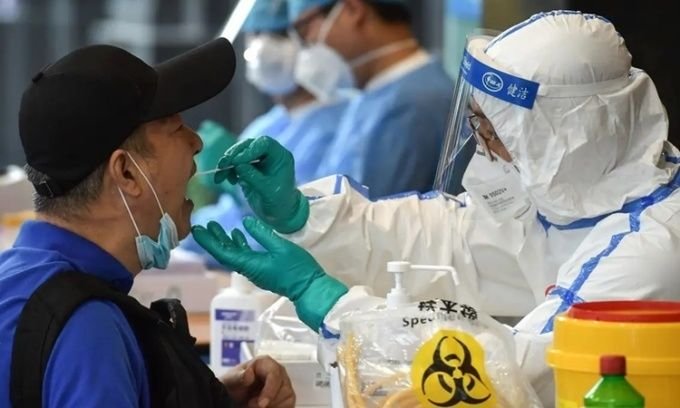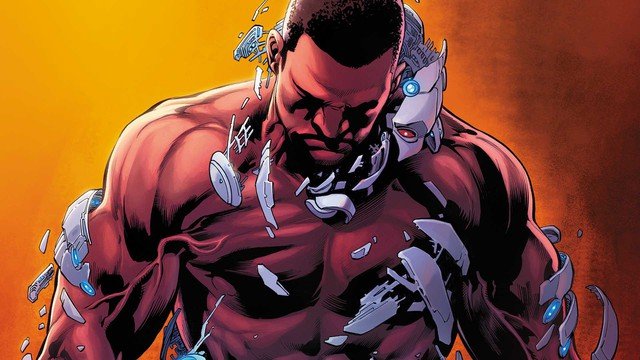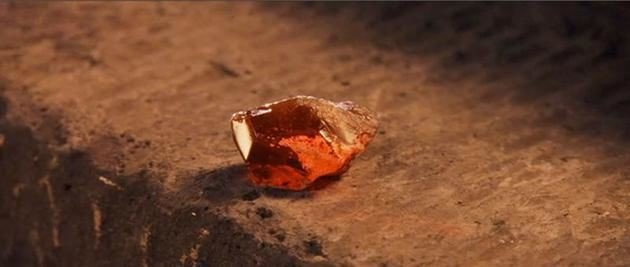
On May 13, the Israel Defense Forces (IDF) sent tanks into the center of Jabalia, Gaza’s largest refugee camp in the north of the strip, and opened fire here.
Many rows of houses in the Jabalia camp were destroyed after Tel Aviv’s air strikes, according to local residents.
Tel Aviv said the Israeli army’s return to the northern strip of land, where the force withdrew most of its soldiers five months ago, is part of the `clean-up` phase to prevent the armed group Hamas from returning.
Meanwhile, the Palestinian side said that the fact that Israel had to send troops back to northern Gaza was evidence that Tel Aviv had not achieved its military goals.
Smoke rises in eastern Rafah on May 13.
At the other end in the Gaza Strip, the Israeli army increased its raids on areas east of the southernmost city of Rafah.
Local residents said Israeli tanks blocked the north-south Salahuddin road, which separates the eastern Rafah area from the city center.
Hamas’s armed wing claimed the group’s fighters were fighting Israeli forces in one of the streets in eastern Rafah and in eastern Jaliaba.

Jaliaba and Rafah location.
Tel Aviv is said to be preparing to launch a large-scale ground operation against Rafah, where about 1.4 million people reside, to destroy 4 Hamas battalions stationed there, despite community warnings.
Israel last week ordered Palestinians to leave eastern Rafah and then expanded the evacuation order to central areas, forcing hundreds of thousands of residents, most of them refugees, to find new shelter.
`People are continuing to leave Rafah, even in areas as far away as the west, because there is no safe place left. No one wants to have to flee at the last minute. By the time tanks suddenly move in, it’s already over.`
Jack Lew, US ambassador to Israel, said on May 12 that Israel’s current military activities in the Gaza Strip are still at an `acceptable` level to Washington.








